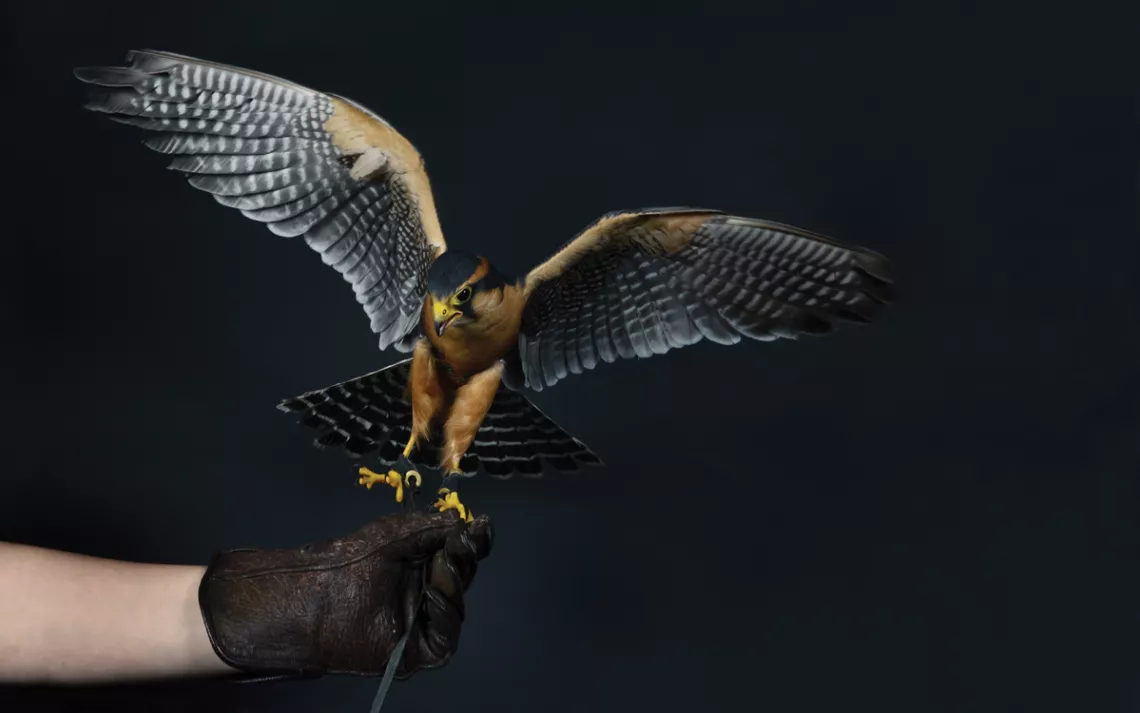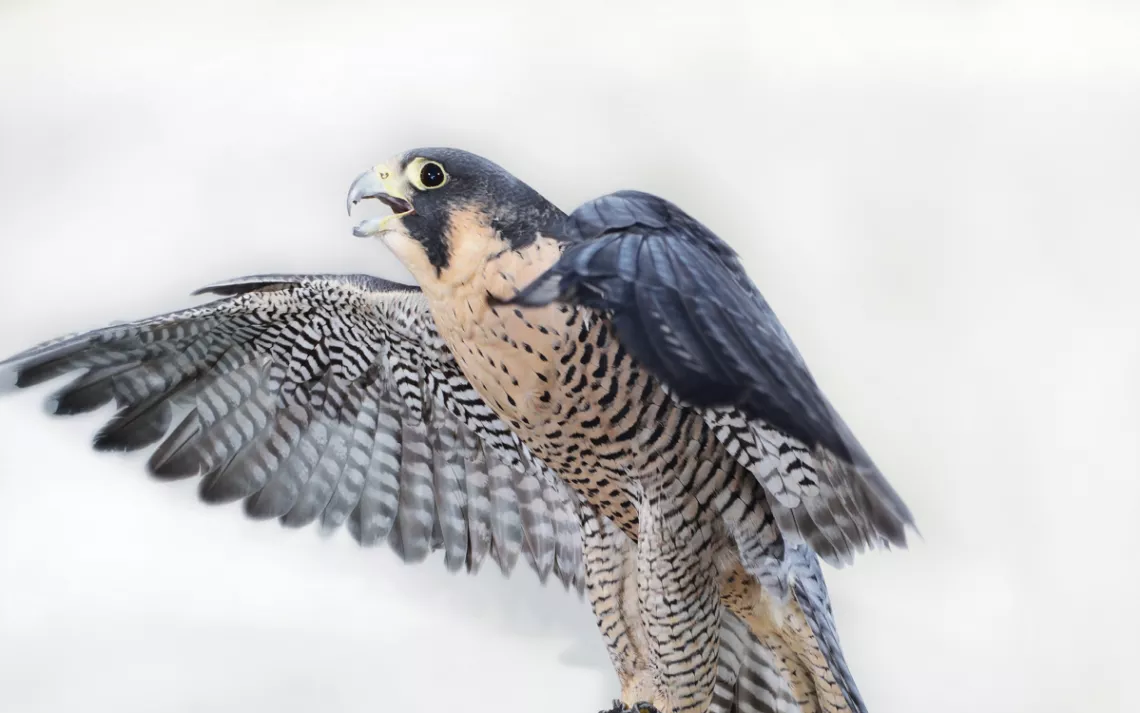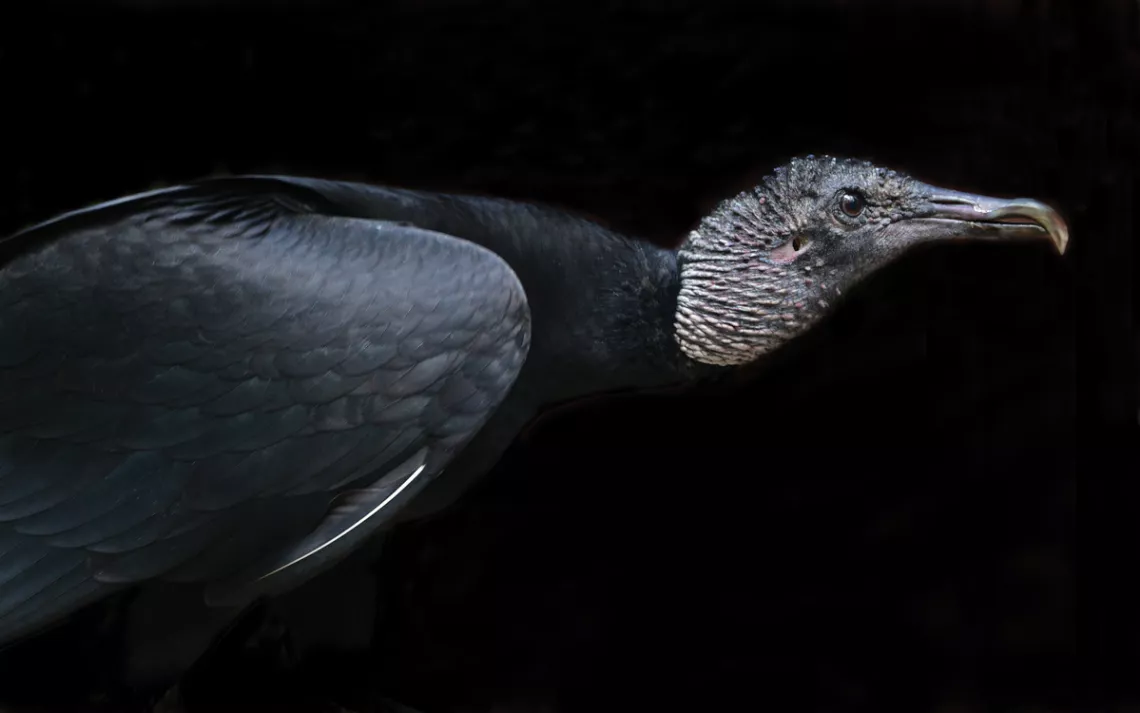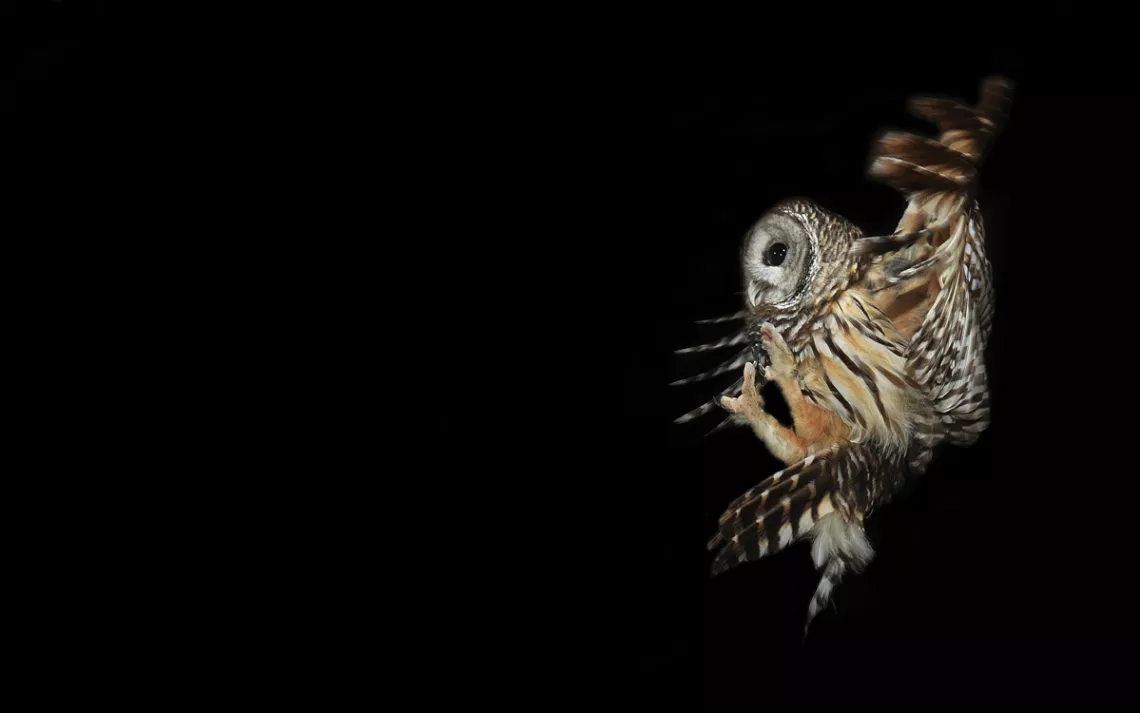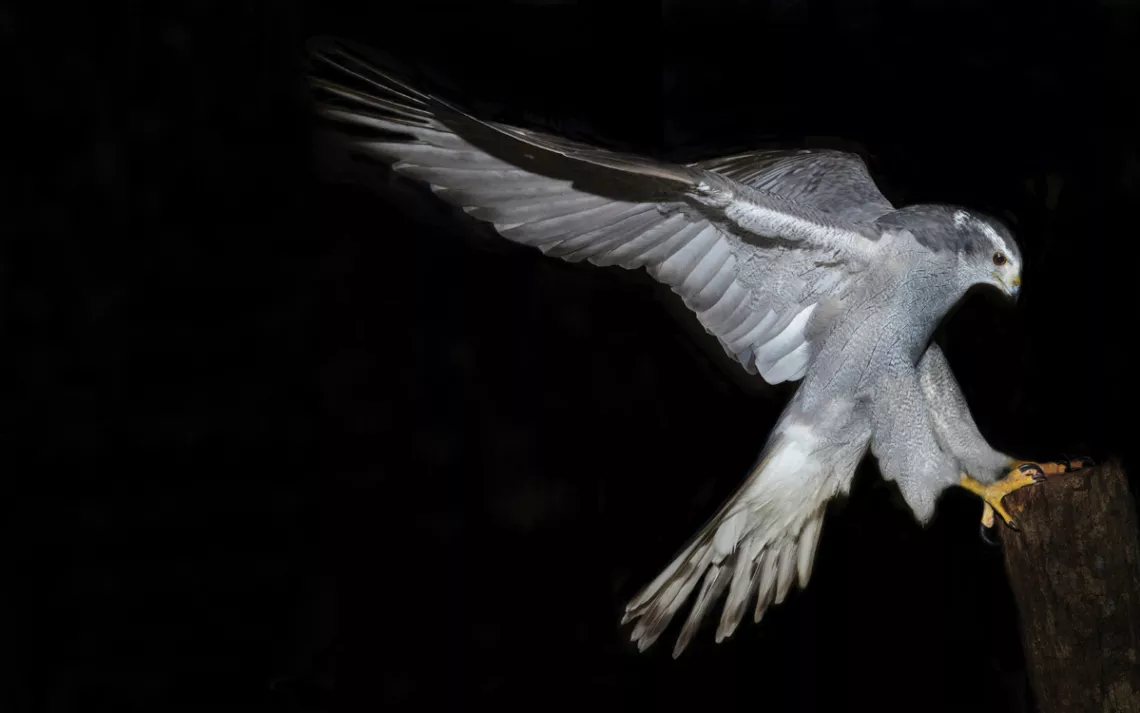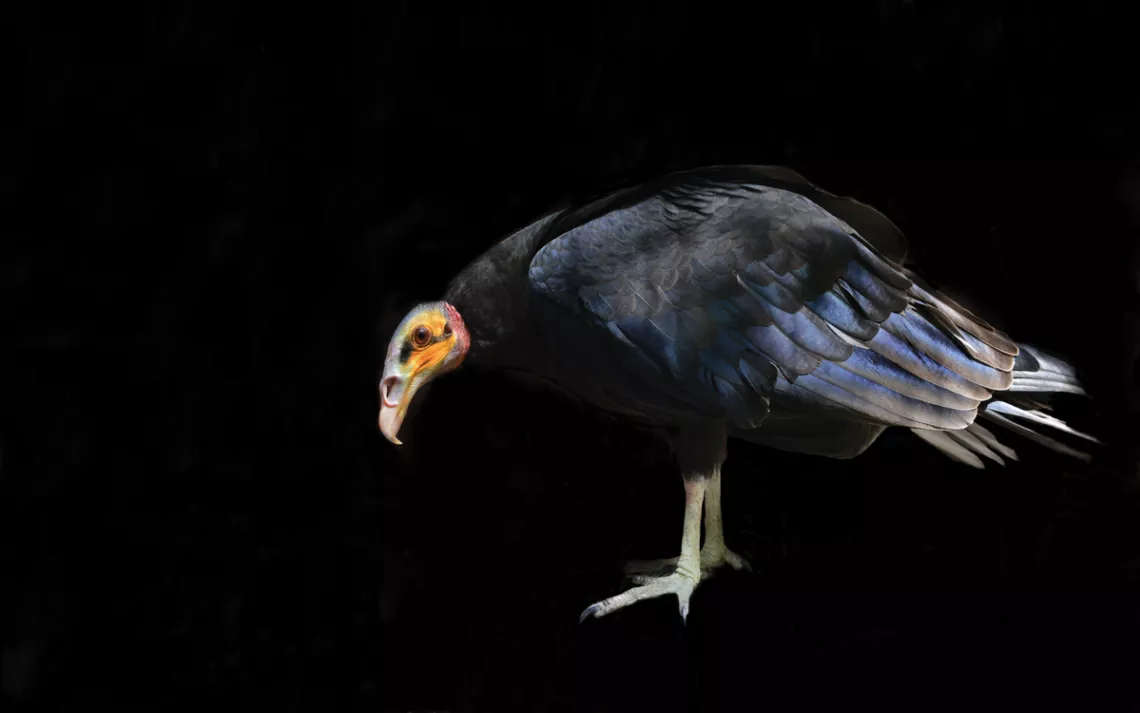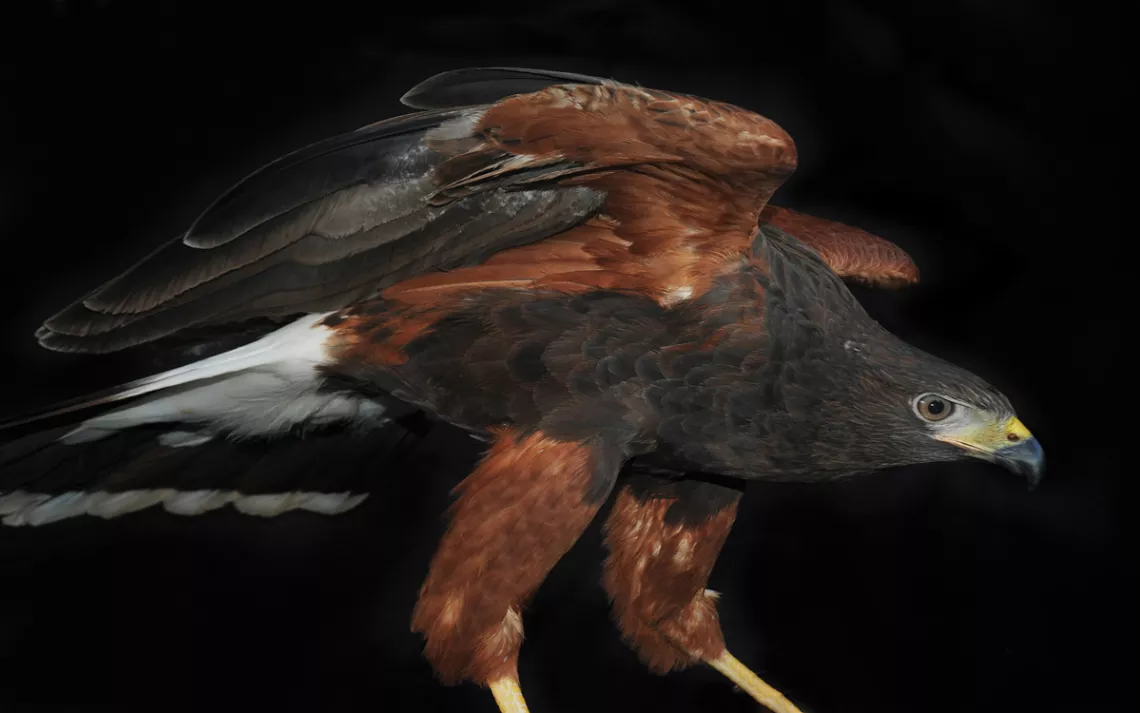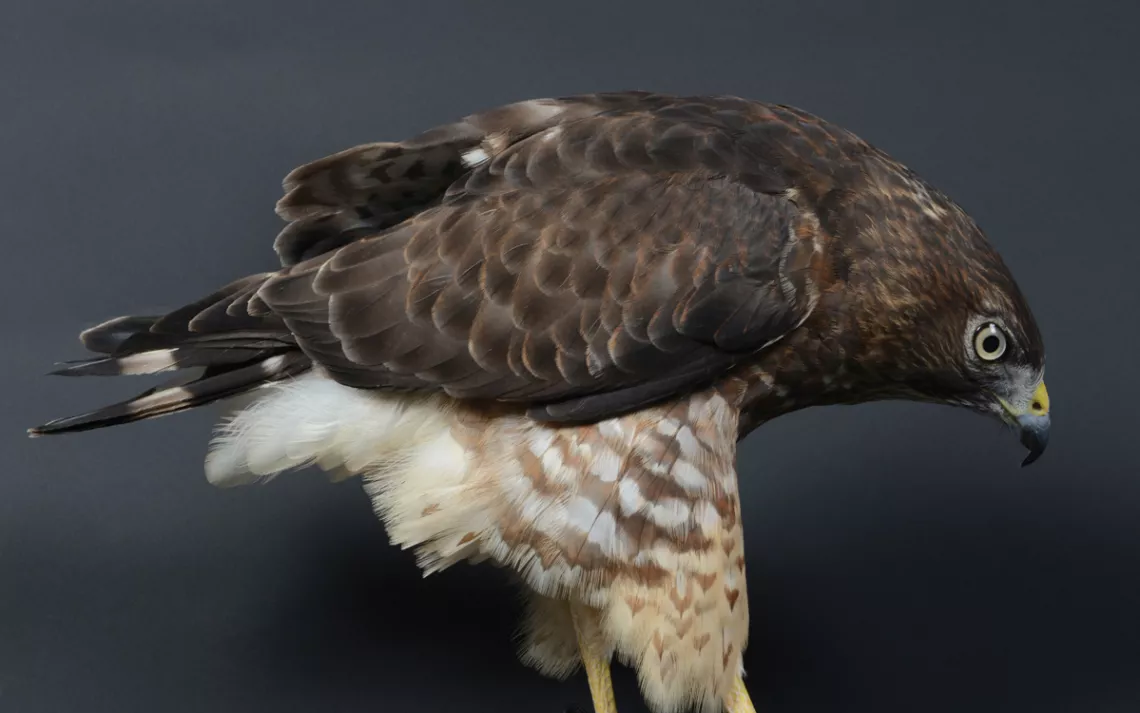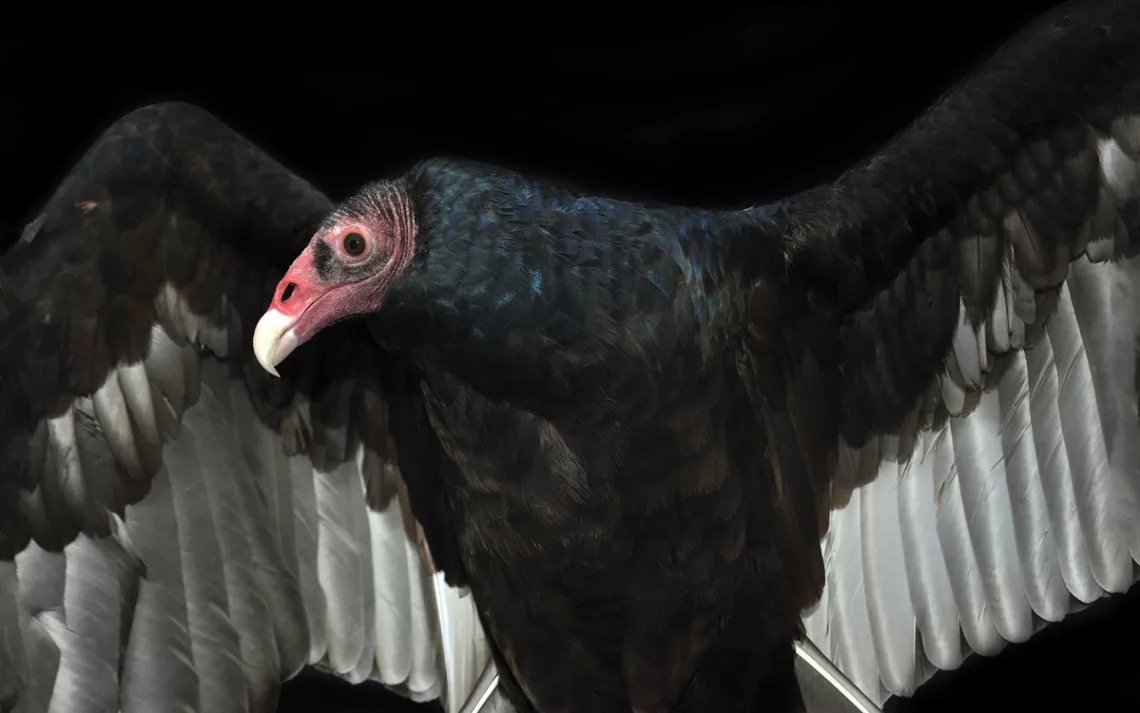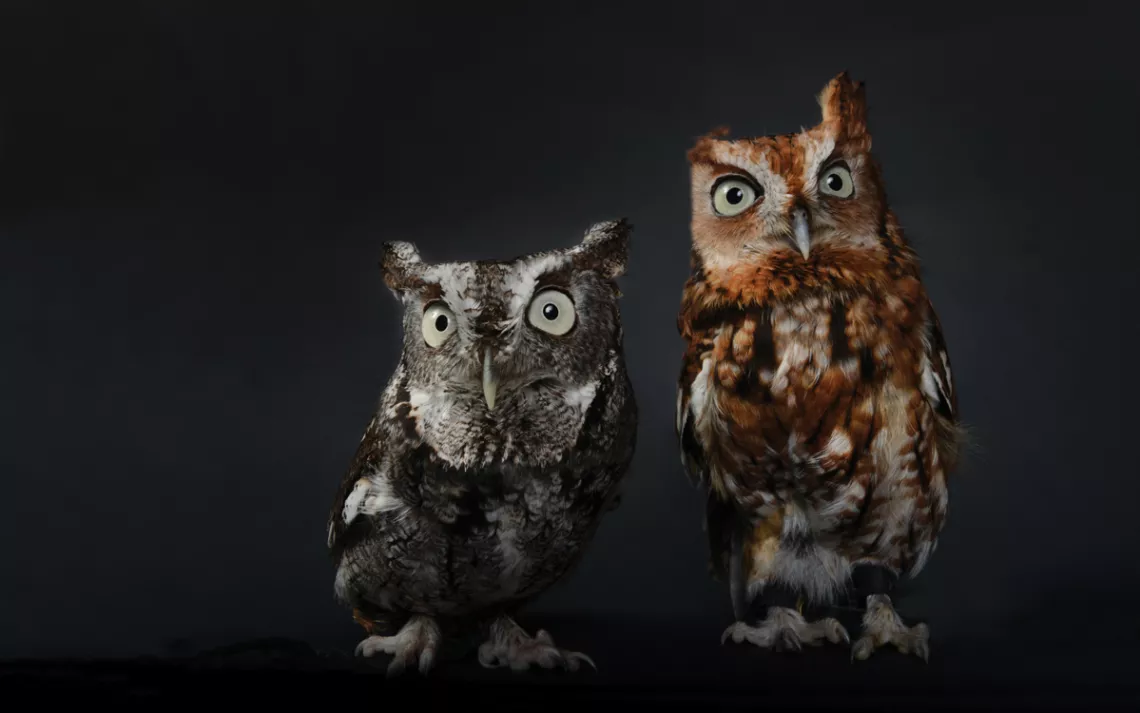Up Close and Personal With Birds of Prey
Photographer Traer Scott talks about capturing intimate portraits of raptors.
Images excerpted from RAPTORS (September 2017). All photos by Traer Scott.
Traer Scott, the author and photographer behind popular portraiture collections including Shelter Dogs, Street Dogs, and Wild Horses, knows a thing or two about getting companion animals to pose. But as she learned during the genesis of her latest project Raptors (out September 19 from Princeton Architectural Press), wildlife is a different story. “Even the most feral street dogs are ultimately drawn to people—it’s easy to motivate them with food and toys,” Scott says. “With wildlife, though, sometimes nothing gets them to cooperate. Because they’re wild animals and don’t want to do what you want to do.”
Vultures, hawks, and eagles aren’t exactly known for their acquiescent manners, which may be why few photographers have captured them individually. But when Scott was pregnant with her daughter in 2011, the longtime animal welfare advocate found herself contemplating the various animals that had made an impression on her own childhood. “My mom volunteered at the North Carolina Museum of Natural History,” says Scott, a Raleigh, North Carolina, native who now calls Providence, Rhode Island, home. “It’s now the state-of-the-art Museum of Natural Science, but back then it was a teeny, tiny old museum with a small collection of indigenous animals that classroom kids would come through and meet—mostly snakes and hissing cockroaches and rodents and things like that. The area didn’t yet have a well-established wildlife rehab network, so from time to time, people would bring injured or orphaned creatures in, and they would often end up coming home with my mom.”
The “amateur rehabilitators,” as Scott describes her family members, ended up with a menagerie of flying squirrels, snakes, and insects as well as a tiny screech owl who’d flown into a sliding-glass door and injured her wing. “We named her Screech,” Scott says. “She was so little and expressive and amazing—and I suddenly started thinking about her a lot.”
Screech led a grown-up and pregnant Scott to the Vermont Institute of Natural Science, a nonprofit environmental education organization well known for its avian wildlife rehabilitation center. There, she tried her hand at capturing the resident hawks, eagles, vultures, falcons, owls, and ravens on camera—a feat that she found required plenty of dead mice and even more patience.
“A lot of the birds that come through there get rehabilitated and re-released, but the ones that can’t get re-released often stay permanently or get sent to other raptor education centers,” Scott explains. “It was so fun to get to know them and try to figure out what motivates them—owls, for instance, aren’t nearly as smart as everyone thinks, but you can’t look into their faces without falling in love. Vultures, surprisingly, are smart and amazing—just really fun, clever birds with a lot of personality. They’ll walk alongside you just like dogs. I also got to know some intensely strong-willed and vocal falcons and goshawks.”
Even the most agreeable raptors, however, presented photo-shoot challenges. “Something that hadn’t occurred to me was that birds of prey have huge talons—long, sharp ones—so it’s really awkward for them to sit flat; they’d just walk around like a dog setting foot in snow for the first time,” says Scott, noting that the term raptor comes from the Latin rapere, meaning to snatch, grab, or take away. “They want to be perched on something at all times, because those talons need to grab.” So, Scott’s husband fashioned a perch out of a log that he’d painted black, so as to blend in with the backdrops Scott was using.
The result? A collection of intimate portraits evidencing the enigmatic birds’ majesty, feral wisdom, grace, and primordial authority. Yet despite Scott’s previous book success, her then agent’s early attempts to find a publisher for Raptors fell flat, and Scott ended up shelving the project. “Instead, I ended up doing a maternal book about newborn puppies”—Newborn Puppies: Dogs in Their First Three Weeks—“which coincided with the birth of my daughter.”
Eventually, Scott revisited the raptor photos, so as to use some shots of owls for another book—2014’s Nocturne: Creatures of the Night. “I was proud to be the first person who’d really done something on nocturnal animals,” she says. Still, the publishing industry showed no interest in Raptors.
Then in 2015, British author, historian, and grieving falconer Helen MacDonald released her emotionally charged memoir, H Is for Hawk. It became not only one of Scott’s favorite books, but also a critical and commercial success. “Suddenly people were interested in falconry and goshawks and hawks—it really brought birds of prey into the conversation.”
The notoriously mercurial tides of the publishing industry turned accordingly—the time was ripe for Raptors, Scott’s eighth book “The popularity of [MacDonald’s] book opened the door for a lot of work centered around birds, specifically birds of prey.”
Scott spent much of 2015 and 2016 researching raptors, working with dedicated falconers and handlers, and traveling to meet birds at rehabilitation centers including Charlotte, North Carolina’s Carolina Raptor Center. She also frequently traveled back to Queechee, Vermont, where she’d met her first birds of prey at the Vermont Institute of Natural Science.
Unlike most of Scott’s books, Raptors doesn’t come with an overt call to action. But its 70 color photos present 25 different species, both exotic and familiar—many of which are endangered, and Scott’s accompanying text highlights the specific threats faced by each. “For instance, vultures and hawks tend to be seen as predators and pests, and so people shoot them, which is illegal, but that doesn’t stop it from happening,” says Scott, who’s already at work on another book, this one about farm animals. “Whenever I work with animals, my primary goal is to make people appreciate not only their beauty, but also their amazing feats of adaptation—because really, any species still on this planet represents an incredible evolutionary miracle."
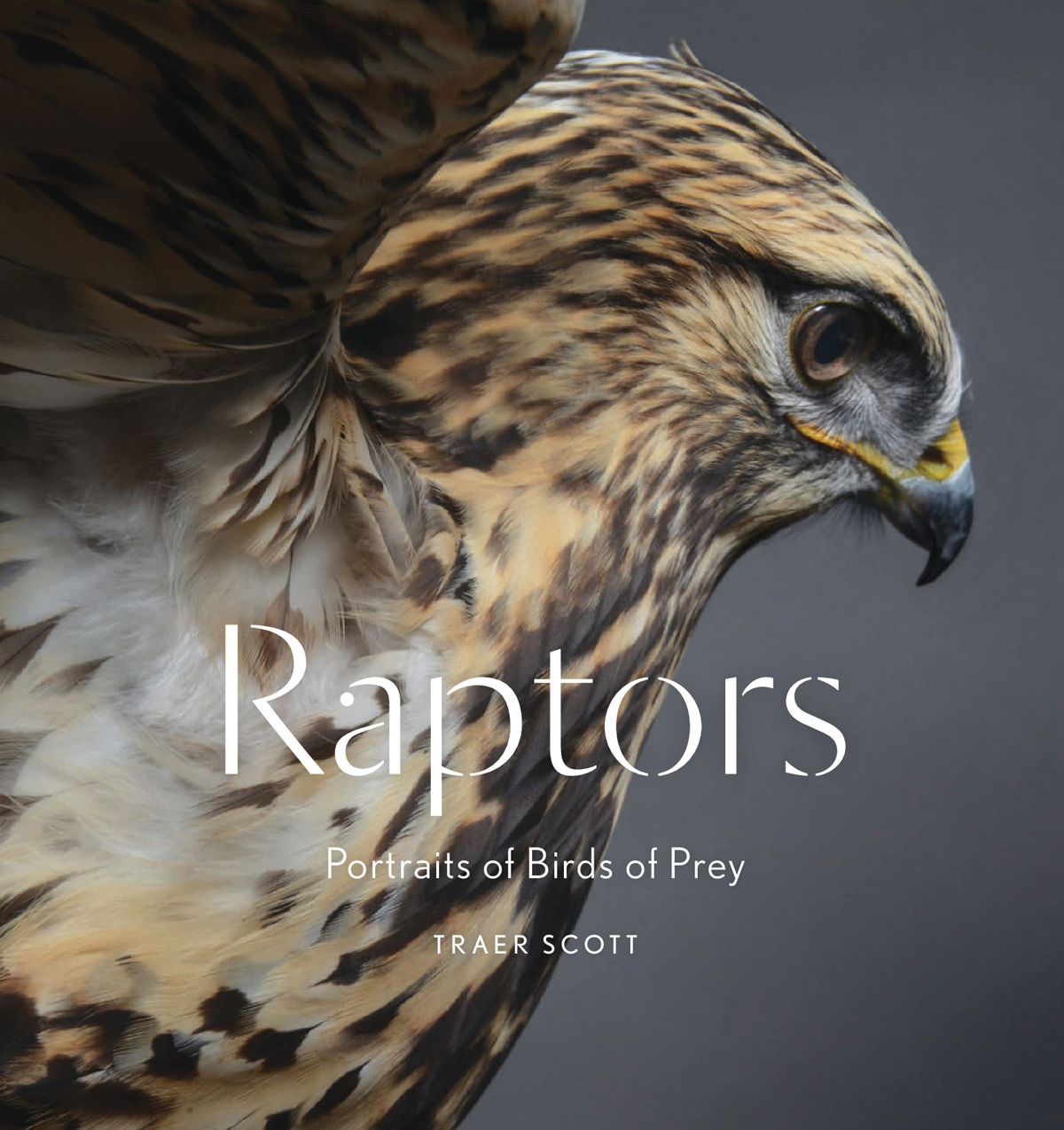
Save
 The Magazine of The Sierra Club
The Magazine of The Sierra Club
